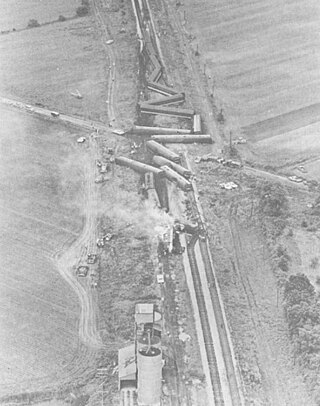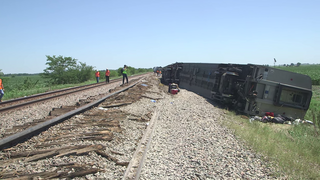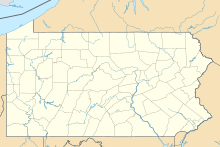
On September 22, 1993, an Amtrak Sunset Limited passenger train derailed on the CSX Transportation Big Bayou Canot Bridge near Mobile, Alabama, United States. It was caused by displacement of a span and deformation of the rails when a tow of heavy barges collided with the rail bridge eight minutes earlier. Forty-seven people were killed and 103 more were injured. To date, it is the deadliest train wreck in both Amtrak's history and Alabama's railway history. It is also the worst rail disaster in the United States since the 1958 Newark Bay rail accident, in which 48 people died.

On March 15, 1999, Amtrak's southbound City of New Orleans passenger train collided with a semi-trailer truck in the village of Bourbonnais, Illinois, United States. Most of the train derailed, killing eleven people. A National Transportation Safety Board (NTSB) investigation into the accident attributed the cause to the truck driver trying to beat the train across a grade crossing. The NTSB's recommendations from the accident included increased enforcement of grade crossing signals, the installation of train event recorders at all new or improved grade crossings, and procedures to provide emergency responders with accurate lists of all crew members and passengers aboard trains. The city of Bourbonnais erected a memorial near the site to commemorate those killed in the accident.

The 2008 Chatsworth train collision occurred at 4:22:23 p.m. PDT on September 12, 2008, when a Union Pacific Railroad freight train and a Metrolink commuter rail train collided head-on in the Chatsworth neighborhood of Los Angeles, California, United States.

On February 16, 1996, a MARC commuter train collided with Amtrak's Capitol Limited passenger train in Silver Spring, Maryland, United States, killing three crew and eight passengers on the MARC train; a further eleven passengers on the same train and fifteen passengers and crew on the Capitol Limited were injured. Total damage was estimated at $7.5 million.

The Fairfield/Bridgeport train crash occurred on May 17, 2013, when a Metro-North Railroad passenger train derailed between the Fairfield Metro and Bridgeport stations in Fairfield, Connecticut, in the United States. The derailed train fouled the adjacent line and a train heading in the opposite direction then collided with it. There were at least 65 injured among the approximately 250 people on board each of the two trains. Metro-North reported damages at $18.5 million.

On the morning of December 1, 2013, a Metro-North Railroad Hudson Line passenger train derailed near the Spuyten Duyvil station in the New York City borough of the Bronx. Four of the 115 passengers were killed and another 61 injured; the accident caused $9 million worth of damage. It was the deadliest train accident within New York City since a 1991 subway derailment in Manhattan, and the first accident in Metro-North's history to result in passenger fatalities. The additional $60 million in legal claims paid out as of 2020 have also made it the costliest accident in Metro-North's history.

The 1990 Back Bay, Massachusetts train collision was a collision between an Amtrak passenger train, the Night Owl, and a Massachusetts Bay Transportation Authority (MBTA) Stoughton Line commuter train just outside Back Bay station in Boston, Massachusetts, United States. An investigation by the National Transportation Safety Board (NTSB) found that the Amtrak train entered a speed-restricted curve at excessive speed, causing the train to derail and crash into the MBTA commuter train on an adjacent track. Although no one was killed in the accident, 453 people were injured and Back Bay station was closed for six days. Total damage was estimated at $14 million. The accident led to new speed restrictions and safety improvements in the vicinity of Back Bay and a revamp of Amtrak's locomotive engineer training program.

The 1971 Salem, Illinois derailment occurred on June 10, 1971, when Amtrak’s City of New Orleans passenger train derailed near Salem, Illinois. It is sometimes referred to as the Tontiderailment, after the unincorporated community of Tonti, Illinois, which was the site of the crash. An investigation by the National Transportation Safety Board (NTSB) found that the derailment was caused by a false flange on a flat wheel caused by a seized axle bearing. The crash killed 11 people and injured 163. It was Amtrak's first fatal accident since assuming control of most intercity passenger trains in the United States on May 1, 1971.

The 2015 Oxnard train derailment occurred on February 24, 2015, at 5:44 a.m. local time when a Metrolink passenger train collided with a truck that a driver had mistakenly turned from Rice Avenue onto the tracks and became stuck. After impact, the train derailed at Oxnard, California, United States. As a result of the crash, the train engineer died from his injuries a week later and 32 passengers and crew members were injured. The truck driver exited his vehicle and ran from the scene prior to the crash; he sustained minor injuries that were unrelated to the crash sequence.

The 2015 Philadelphia train derailment of a New York City-bound Amtrak train in Kensington, Philadelphia, Pennsylvania in the United States resulted in multiple passenger injuries and deaths and disrupted Amtrak service for several days afterward due to the resulting investigation and removal of the wrecked train cars.

On the evening of July 18, 2013, a CSX freight train carrying municipal solid waste on tracks of the Hudson Line along the Harlem River Ship Canal in the New York City borough of The Bronx partially derailed between the Marble Hill and Spuyten Duyvil stations. While no one was injured, the derailment caused over US$800,000 in damage and took several days to clean up. Commuter rail service by Metro-North Railroad, which owns the line, was suspended for two weekends in order to fully restore normal operations.

The Cimarron train derailment occurred on March 14, 2016, when Amtrak's Southwest Chief derailed about 20 miles (32 km) west of Dodge City in Kansas, United States. Twenty-eight people were injured, including two critically.

On December 18, 2017, Amtrak Cascades passenger train 501 derailed near DuPont, Washington, United States. The National Transportation Safety Board's (NTSB) final report said regional transit authority Sound Transit failed to take steps to mitigate a curve at the accident location, and inadequately trained the train engineer. The train was making the inaugural run of the Point Defiance Bypass, a new passenger rail route south of Tacoma, Washington, operated by Amtrak in partnership with state and local authorities in Oregon and Washington, on right-of-way owned and operated by Sound Transit. The bypass was intended to reduce congestion and separate passenger and freight traffic, and was designed for faster speeds and shorter travel times, saving ten minutes from Seattle to Portland compared with the previous route used by Cascades.

On February 4, 2018, the southbound Amtrak Silver Star No. 91 passenger train from New York City to Miami collided with a stationary CSX Transportation freight train in Cayce, South Carolina, just south of the state's capital of Columbia on CSX's Columbia Subdivision. Two Amtrak crew members were killed and 116 other crew and passengers were injured.

On September 25, 2021, at 3:56 p.m. Mountain Daylight Time, Amtrak passenger train 7/27, the westbound Empire Builder, carrying 149 passengers and 16 crew members, derailed west of the town of Joplin, Montana, United States. The train consisted of two locomotives and ten cars, eight of which derailed.

On June 27, 2022, the Southwest Chief, a passenger train operated by Amtrak, derailed near the small town of Mendon, Missouri. The derailment was caused by the train striking a dump truck that was obstructing the crossing of County Road 113, about three miles (4.8 km) southwest of Mendon. Four people were killed in the wreck: three passengers on board the train and the truck driver, with up to 150 people injured.

















